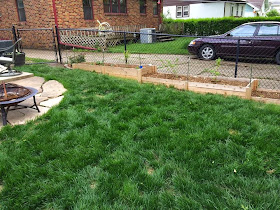I often hear a lot of talk promoting diversity, in our communities, workplaces and government agencies. There is a lot to be gained with a diverse group working towards a particular goal. A diverse workforce can bring a broad set of experiences to help solve a problem. They might have encountered a similar problem before and can share how they solved it. People with different backgrounds might have different ways of thinking about a problem, and the group may be able to build off of each others ideas. Different languages and cultural experiences can help a business capitalize on markets they might not have been able to without a diverse workforce. These are benefits you've most likely heard of in the workplace. But did you know, we can use diversity to benefit our landscapes?

For example, several cultivars of apple tree will allow you to have ripe apples from late summer well into fall. If you separate these with a plum or pear tree between, apple pests will have a hard time moving from tree to tree.
Another example would be the "Three Sisters" used by some Native American tribes. Maize (corn), beans and squash were often grown together to benefit each other. The maize provides corn, and at the same time gives the beans a natural trellis to grow on. Besides the bean for food, they also work with nodule forming bacteria to fix nitrogen form the air which can act as a fertilizer for the corn and squash. The squash grows low to the ground with large leaves that helps hold in moisture and act as a living mulch suppressing weeds.

Flowers in your garden not only look pretty but can also serve multiple purposes, sometimes called "stacking functions." Marigolds can provide control of harmful nematodes, a sort of tiny worm. Most flowers will attract and feed bees and other pollinators. Some also provide habitat for predatory insects that can reduce harmful insect populations. Don't forget there are herbal and medicinal flowers too!
Permaculture Design Principle #10
Use and value diversity: Diversity reduces vulnerability to a variety of threats and takes advantage of the unique nature of the environment in which it resides.
In the forest garden above species were selected for their food yield, including cherry, blueberry and more. An herb mound on the right was also included near the Redbud tree which fixes nitrogen similar to the beans mentioned previously. The horseradish in the back right corner can be harvested for its spicy root, but also mines nutrients from the subsoil. The leaves can be cut to use as mulch providing these minerals for the other plants. Echinacea and other flowers are grown in the sunny openings to attract beneficial insects and for their potential medicinal value.
Water features can provide habitat for amphibians (which are beneficial predators), a place to drink and bathe for birds, and relaxing sounds for a sleepy summer afternoon. Chickens provide eggs, possibly meat, and perform pest control duties, compost enhancement and outstanding nutrient/fertilizer yield. The possibilities are amazing!
As you can see, we can embrace diversity in our landscapes as well as in our communities. Just as a diverse workforce can enhance a business, a diverse design can enhance your lifestyle and boost your connection with nature. Each element can perform multiple functions which will increase the resiliency and productivity of your environment.
Thanks for reading! If a diverse, sustainable and productive landscape interests you
contact me and I can get you started.













.JPG)













.JPG)



















